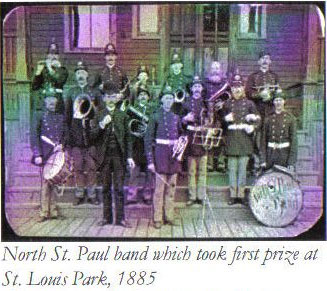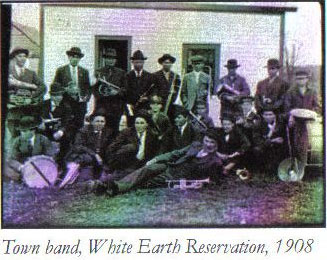Automobiles made it much easier
to seek out musical entertainment
outside of one's local community, The
invention of the radio, moving pictures,
phonograph records and, later,
television, all created new competition
for homegrown musical and theatrical
entertainment. Musical tastes and fads
were also defined by national recording
stars and musical groups that appealed
to more selective and demanding
audiences.
Not surprisingly, the focus of
composers, music publishers and
musical instrument companies also
shifted to the growing opportunities for
young people to learn to play musical
instruments in schools. Particularly
after World War II, there was a huge
surge in school enrollments and
expansion of music education
opportunities for virtually all students.
One music industry leader
estimated that, boy the early 1970's
about 3 million American students
were playing in almost 50,000 high
school marching and concert bands. In
Minnesota, the strongest growth in
enrollments and school music opportun-
ities occurred in the suburbs. And,
many young Minnesotans continued
their musicianship beyond high school
- with a number of the state's colleges
and universities establishing themselves
nationally for their outstanding bands,
orchestras and choirs.
whom were ready to pursue their
talents in their adult lives. The result,
since the late 1970's has been the
creation of dozens of new volunteer,
amateur bands in communities across
Minnesota.
This resurgence of interest has
also benefited from an increased desire
for a stronger sense of community - in
urban neighborhoods and in both aging
and rapidly growing suburbs. One
reflection of this desire has been a huge
expansion in the number of outdoor
summer concert venues that have been
created in recent years. they include
facilities modeled on longstanding
concert venues such as the Lake Harriet
Band Shell and the Como Park Pavilion.
the result is the estimated 150
community bands now in existence in
Minnesota - creating musical
opportunities and enjoyment for their
thousands of members and their loyal
audiences.


